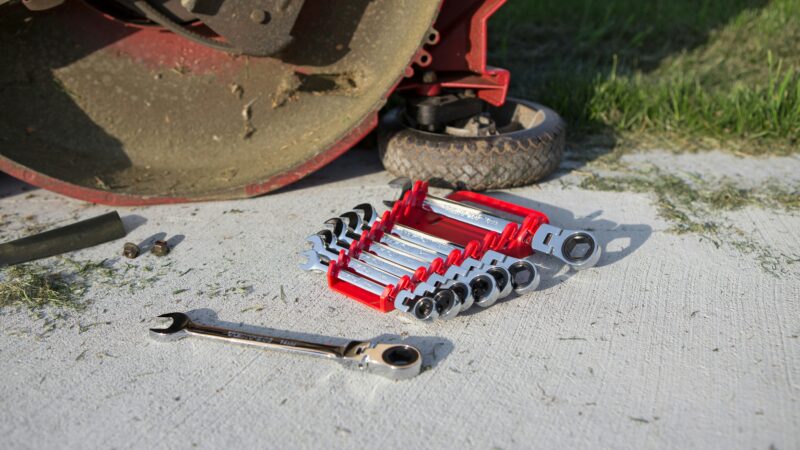
As passionate landscaping and lawn care contractors, we know that a well-maintained lawn mower is the secret to a lush and healthy lawn. Regular maintenance not only ensures optimal performance but also extends the life of your equipment. In this blog post, we’ll guide homeowners through the fundamental aspects of lawn mower maintenance, empowering you to keep your green oasis thriving.
- Read the Manual:
- Understanding Your Mower:
- Start by familiarizing yourself with the manufacturer’s manual for your specific lawn mower model. The manual provides essential information on maintenance intervals, recommended oil types, and other crucial details.
- Understanding Your Mower:
- Cleaning and Inspection:
- Remove Debris:
- Before diving into maintenance tasks, ensure the mower is turned off and the spark plug wire is disconnected. Clean the mower deck, removing grass clippings, dirt, and debris. A clean deck prevents corrosion and enhances cutting efficiency.
- Inspect Blades:
- Regularly inspect the mower blades for sharpness and balance. Dull or imbalanced blades can damage your lawn and reduce the mower’s efficiency. Sharpen or replace blades as needed.
- Check Spark Plug:
- Remove and inspect the spark plug. Replace it if it shows signs of wear or if the electrode gap is incorrect. A well-maintained spark plug ensures efficient combustion.
- Remove Debris:
- Oil Change:
- Regular Oil Changes:
- Follow the manufacturer’s recommendations for oil change intervals. Changing the oil regularly keeps the engine lubricated and running smoothly. Dispose of used oil responsibly.
- Check Oil Level:
- Monitor the oil level regularly. Maintain the oil at the recommended level to prevent engine damage and ensure proper lubrication.
- Regular Oil Changes:
- Air Filter Maintenance:
- Clean or Replace:
- The air filter prevents dust and debris from entering the engine. Clean or replace the air filter according to the manufacturer’s guidelines. A clogged filter restricts airflow, leading to reduced performance.
- Clean or Replace:
- Fuel Management:
- Use Fresh Fuel:
- Use fresh, clean gasoline with the recommended octane rating. Stale or contaminated fuel can lead to starting issues and engine damage.
- Fuel Stabilization:
- Add a fuel stabilizer if the mower will be stored for an extended period. This prevents fuel deterioration and keeps the carburetor in good condition.
- Use Fresh Fuel:
- Check Belts and Cables:
- Inspect and Adjust:
- Regularly inspect belts and cables for wear and proper tension. Adjust or replace them as needed to ensure the mower’s various components operate smoothly.
- Inspect and Adjust:
- Lubrication:
- Grease Moving Parts:
- Lubricate the mower’s moving parts, such as wheel bearings and pivot points, with the appropriate lubricant. This reduces friction and prolongs the life of critical components.
- Grease Moving Parts:
- Store Properly:
- Clean and Dry Storage:
- Before storing your mower, clean it thoroughly and ensure it’s dry to prevent rust and corrosion. Store it in a cool, dry place away from direct sunlight.
- Disconnect the Battery:
- If your mower has a battery, disconnect it before storage. This prevents the battery from draining and ensures it stays in good condition.
- Clean and Dry Storage:
By incorporating these basic lawn mower maintenance practices into your routine, you not only enhance the performance of your equipment but also contribute to the overall health of your lawn. A well-cared-for mower is your partner in creating and maintaining a vibrant green space for you and your family to enjoy. Follow these simple steps, and let your lawn mower thrive as it transforms your yard into a lush paradise.




